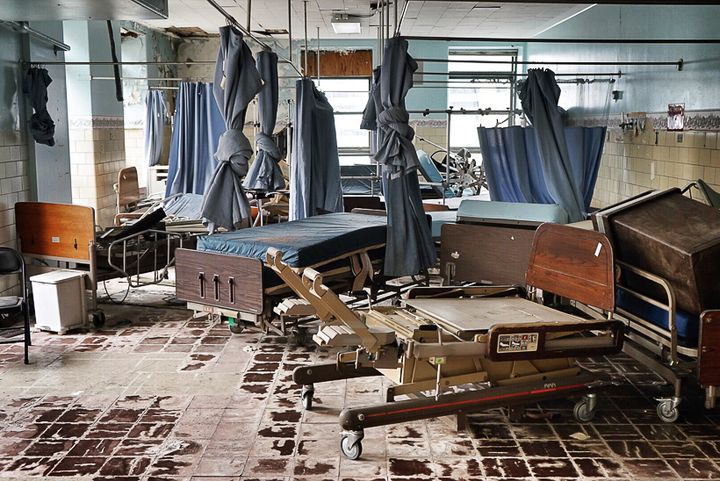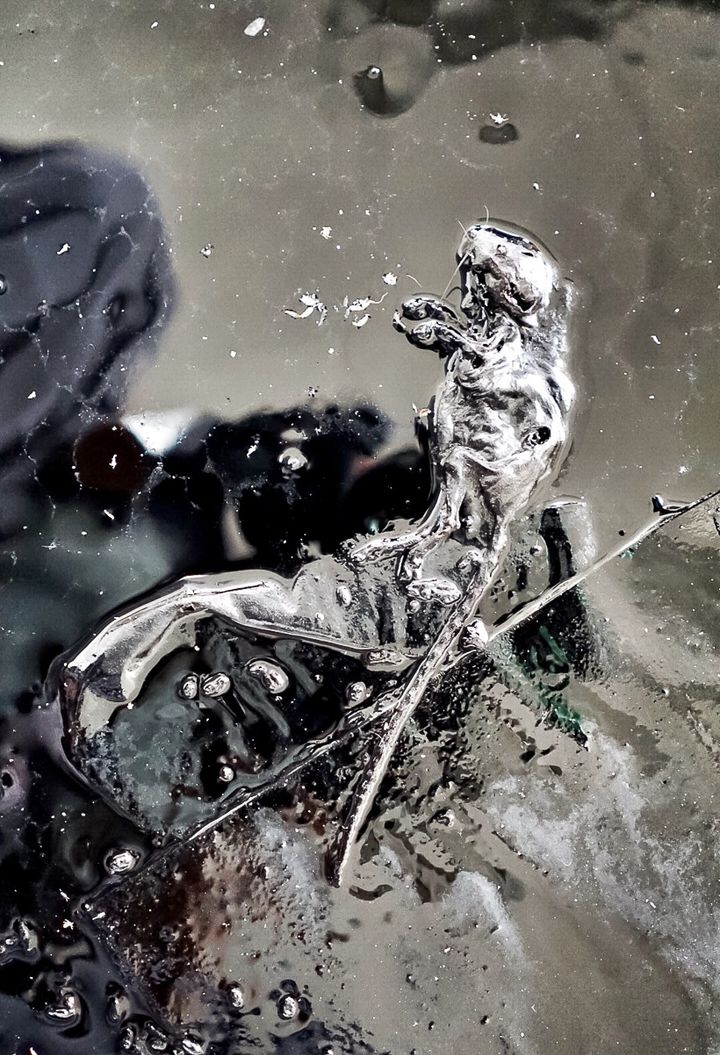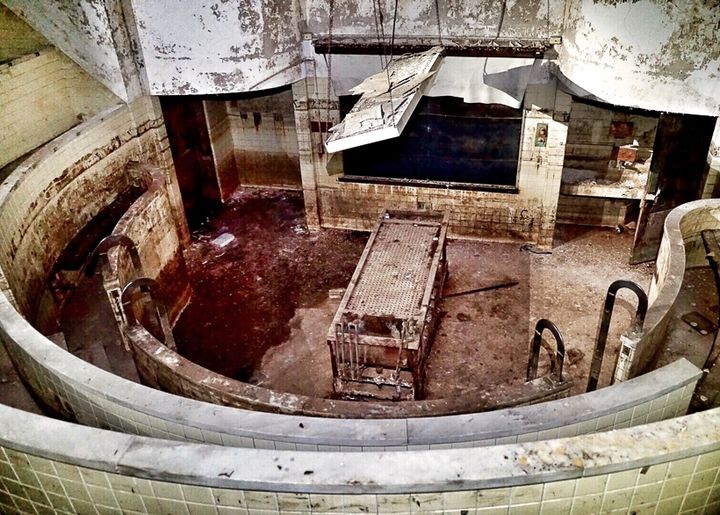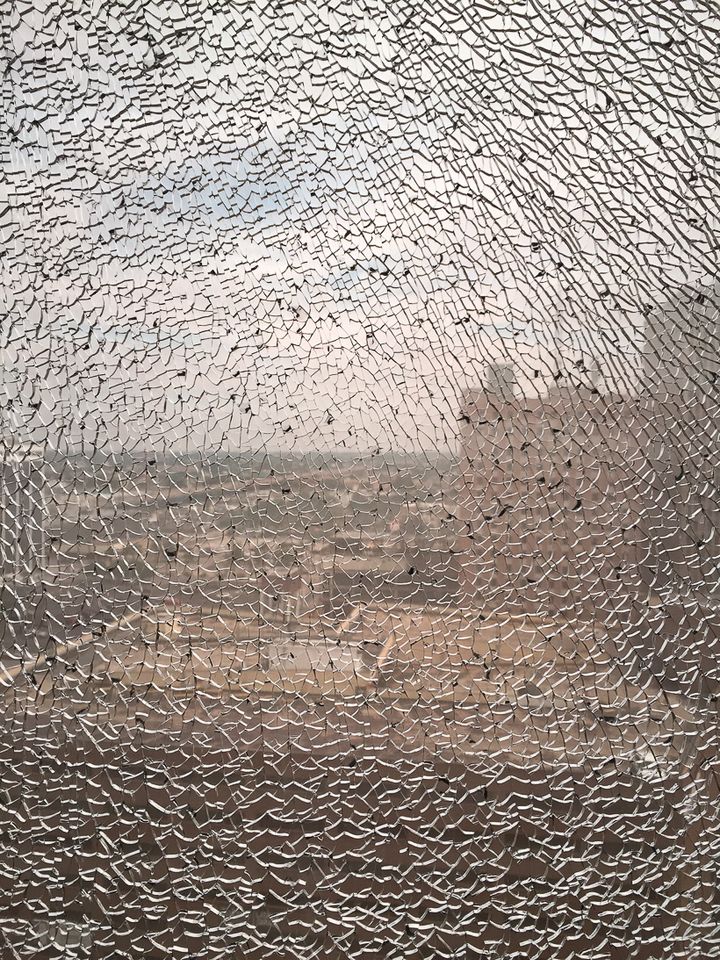
“Recovery”
Every time I visit New Orleans, I am astonished by the number of buildings and houses I see still abandoned and boarded up since Hurricane Katrina. One building that remains abandoned nearly twelve years after the storm is Charity Hospital.
Charity Hospital at one time was the second oldest and second largest free hospital in the history of the United States. It operated for 300 continuous years. During Hurricane Katrina it suffered damage and the hospital was promptly closed. Following the storm there were several efforts to clean up the hospital and make it operational again, but it never came back online.
In fact, the main reason it never re-opened was due largely to powerful forces within the state of Louisiana conspiring to block its reopening. These forces included Louisiana State University, which operated Charity Hospital. The Nation describes this piece of the story very well in this article.
The article states that:
“Charity flooded only in the basement during Katrina. In an extraordinary act of dedication and volunteerism, a 200-person medical and military team brought in a 600-kilowatt generator, pumped out the water and prepared the hospital for service. It was cleaned (to a condition better than before the storm) and was “medical ready” within weeks, according to doctors and military personnel present at the cleanup, as well as Lt. Gen. Russel Honoré, the retired Army general who was commander of the joint task force on Katrina.”
“...The money that has flowed from the state and federal governments to compensate for the storm’s damage to the hospital is set to be spent on a highly controversial new $1.2 billion complex on an entirely different site, separated from the downtown core by an interstate highway.”
Michael Alford is a New Orleans-based photographer whose new project is called 'A Different Kind of Truth.' The project is a documentary photo series that explores the mechanism of change within New Orleans' Charity Hospital. Michael's photo series documents his nearly 100 visits inside the hospital during the past decade and shows never-seen-before views from inside the abandoned hospital.
I interviewed Michael recently to learn more about why Charity Hospital never re-opened.
Ben Arnon: Describe the project. . .when and how did it begin? And what was the biggest challenge you faced along the way?
Michael Alford: The project is a documentary photo series that explores the mechanism of change within Charity Hospital. During Hurricane Katrina it suffered extreme damage and the hospital was promptly closed. Through that whole process it had been decided by the powers that be within LSU Health Medical Center that they wanted to open up a new facility.
Fast forward, it's been 11+ years. There was a new hospital that was built. It was a $1.2 billion dollar, brand new hospital, just about a quarter mile away [from Charity Hospital]. Charity Hospital is one of the largest buildings in downtown but it remains locked up, locked down and basically one of the largest ghosts in the city.
All I can say right now to avoid legal issues would be that it's a multi-year project. I began probing the building in early 2007 or 2008, and it ran all the way up to approximately last fall. That’s when the last expedition inside was. It was something that I decided, as a person and as an artist, it was something that I needed to see for myself. I needed to know why that building was looming in the downtown area, locked down, secured, patrolled, and nothing was being done. Because of my military background I have a unique skillset and that allowed me to basically utilize those skills to gain access to that facility.
Are you from New Orleans originally?
No. My family's from Louisiana. I was born in Seattle to a military family but my dad was born and raised in Louisiana. I've spent a great deal of my life living in the south and serving in the military in the south. It's home. I've been here almost a decade now.
So was Charity Hospital a real personal passion project for you?
Well, it's a unique facility in itself. I mean, it was uniquely New Orleans. It had a unique flair and flavor to it, just like the citizens, history, and culture of New Orleans. They kind of operated things in a little different manner than your typical hospital would. It was not uncommon to have second line parades in the downtown area, and to have people and musicians come spilling into the hospital bringing music to the patients. Parades passing by, things that you wouldn't typically see in other hospitals around the country. Every day that building remains locked down, personally I think that a little bit of the history of New Orleans is being lost every day that the building is lost.
Can you talk a little bit about your background with other documentary photography projects before we dive deeper into this Charity Hospital project?
I was one of a pool of approximately 90 photographers that were selected by the World Trade Center [in New York City] to do documentary photography and covered that until 2006, until the point where the World Trade Center needed to focus on their primary function of trade. Everything else got turned over to the 9/11 memorial and now that's a part of that archive.
A great deal of what I did was documenting human interaction at the site. Initially I would shoot from inside the fence looking out, in the beginning when they had the original chain-link fence. I photographed debris removal. Every now and then there would be human remains found. The site would come to a shutdown procedure and then people would line the ramp pit and the remains that were brought out, no matter how large or how small, were treated with the utmost respect and taken out with full honors. That was part of what I did, as well as a lot of the documentary photographs of Tower Seven when it was finished off and opened up.
Back to Charity Hospital. . .how many times would you estimate that you've been inside the hospital since it closed down?
I’ve been inside nearly 100 times. There are urban explorer groups in different social media circles that go to different places around the country and around the world. That facility became a hotspot at one time. That's not the reason I did that. It was never about that, it's always been an art project. I'm not saying I'm the first and I'm not saying I'm the last, but I'm definitely the only one that's done it as a documentary photo series.
Can you talk at all about how you've managed to gain access to the inside of the hospital or is that confidential?
Well, I can say that I didn't break in. The building following its hit from Katrina was boarded up, windows were busted, doors were cracked. Contractors attempted to seal the building up with plywood in a lot of places. Fast forward over time, given the environmental exposure in the city, high humidity, high heat, cold in the winter. Standard plywood doesn't last very long, quickly rots away and it's just a matter of probing different areas around the facility and then finding where that degradation is and entering through those spots.

“Administration”
How unsafe was it inside? Did you have to use any special safety equipment, wear any special sort of materials to protect yourself?
I always wore a respirator, gloves, waterproof steel-toe protected boots, thick military style pants that would sustain being snagged or cut on something. Head gear, eye protection. Given that kind of environment you never know. Going in I didn't know what to expect so I prepared for the worst and hoped for the best. I did take equipment in with me in the form of additional protection, basic tools if need be, basic first aid, hydration, food. I ran it just like a typical mission that I would run in the military.
Was it always just you or did you have any other people to help with all of this gear?
Well, I've done a combination. It's always safer if you have somebody else just in case something does go sideways. I can't speak on behalf of those other individuals, a lot of them want to remain anonymous. Those are people that are also uniquely adapted to dealing with a situation like that as well.
Are there any animals that you encountered inside there such as dogs, raccoons, or anything else?
The hospital has its own flora and fauna. Inside, where windows have been busted out, birds have flown in. They've passed seeds from feeding. Those seeds have germinated and grown things. There are animals, there's a considerable rodent population. There are raccoons, there are birds, there's feral cats, a large amount of insects. My favorite though was a very large owl that kind of rules the roost, he's the apex predator. He feeds on the cats, and the rats, and everything else in between.

“Entrapped (Mummified Rodent)”
Oh wow. Were you afraid of any of the animals? Were you ever afraid that there might be a wild dog or anything like that?
No, no. There was always a contingency plan for that too.
What was the most surprising thing that you saw inside the hospital?
Aside from seeing the vast amount of medical supplies, medical materials, medications, large scale hospital equipment, MRI machines, medical equipment still wrapped up in plastic with shipping labels on them, or pallets that were there prior to the hospital closing still sitting there. The thing that really stands out the most to me is there are literally probably hundreds of thousands of photographs from the employees that worked there. Doctors, nurses, medical staff, all the other contingency of people that worked there. With the issue of circulation of the building, those photographs kind of float around the building and tend to move around. Those are pictures of not just the citizens, but again, that's the history of New Orleans floating around in that building. I think at some point a lot of those images should be collected and archived as well as a large record collection. New Orleans is known for its history of music and there's a record collection from about the 1920's going all the way up until probably about the 80's.

“And the Sky was Grey”
How about the more gruesome discoveries. Were there body parts or anything else of that sort that you saw inside the hospital?
We were told as citizens that a lot of those materials had been removed from the facility. I literally covered every floor, every department, I did my history on the building. I had been in the building when it was operational so I knew the general layout of the facility. In going into this project I had to do some research and I started out with areas that kind of piqued my interest right off. That led me to the blood bank, medical supply, pathology, disease control, the morgue, other places that you would think that those were highly active areas. A lot of the surgical suites. Some of those areas still had IV's hanging on IV poles like they were prepped for patients ready to roll in, but the patients never showed.

“The Morgue and the Mud Line”
I don't want to dwell on this because I'm not interested in this for the sensationalistic factor or anything like that. Obviously, I don't think that I'm the only person who would do a double or triple take at some of those photographs that I just mentioned with fingers and toes and stuff.
A lot of those items that were in pathology, they were put into medical containment vessels and they were probably in some type of substrate like formaldehyde or something similar. They had been in that solution so long and became so saturated that they were basically preserved. They were pickled. But because there's no power, no heat, no cooling, a lot of those items in those plastic containers get very hot. Over time they expand and contract and then eventually pop the tops and spill out. Now, they do degrade over time because on other investigations in those areas some of the body parts I saw had begun to degrade even more. They’re still I guess fairly preserved specimens.
I know that you wear a respiratory mask when you go in there but have you ever taken it off for a second and taken a whiff? Can you describe the smell inside of Charity Hospital?
Depending on what part it is, it's very musty, very thick, very heavy air. It smells like decay. It smells like death. That's about the simplest terms that I could put it in. It's not something that you'd want to breath over any extended period of time. Even on my entry and exit, I even had a decontamination procedure that I would go through and remove those items, rinse them down, put them in plastic tubs that were sealed up then tape those tubs shut. In some cases the items were either discarded completely or sanitized at a later date in a different location.
Tell me about your exhibit. The photographs were on exhibit in December. Was that the first time they were made available to the public?
This was the first time that they had been seen in the city of New Orleans. During the summertime [2016] I had a world premiere in Mexico City. That exhibition had 100 images. The exhibition at the Boyd Satellite in New Orleans was a condensed version. It ran through January 7, 2017.
What are the plans from here? Are there plans to exhibit it further or any publishing plans?
Yes, there is a book planned. The mockup for the book is complete and was recently submitted for an "Addy Award." The foreword for book was written by esteemed Contemporary Art Curator Anna Mecugni, who was formally with the Philadelphia Museum of Art and MoMa.
Also, the exhibition will be featured this year in several Louisiana universities. ‘A Different Kind of Truth’ received an article and positive review from the New Orleans Art Review magazine. I'm in the process of seeking several grants to expand the exhibition’s reach and additionally create another series of larger prints.
What would you ideally like to see happen with Charity Hospital and when you survey people throughout New Orleans what is the general consensus? Do people want to see it renovated and reopened? Do they want to see it landmarked and made into a museum?
I'd like to see it revitalized. The building is a 1920's art deco building. It's a beautiful building, the architecture is extraordinary. Over the years there have been several major international rehabilitation organizations that have offered to invest up to 200 million dollars in rehabbing the building for high-end shopping, executive medical suites, and even high-end, high-rise penthouse apartments. I don't know if that's the answer, but certainly doing nothing with the building doesn't benefit the city or its citizens at all. I'd like to see something done. I hope that this photography project might serve as a public conduit to at least put the conversation out there to say, "What's going on, and what's going to be done?"

“Shattered”
